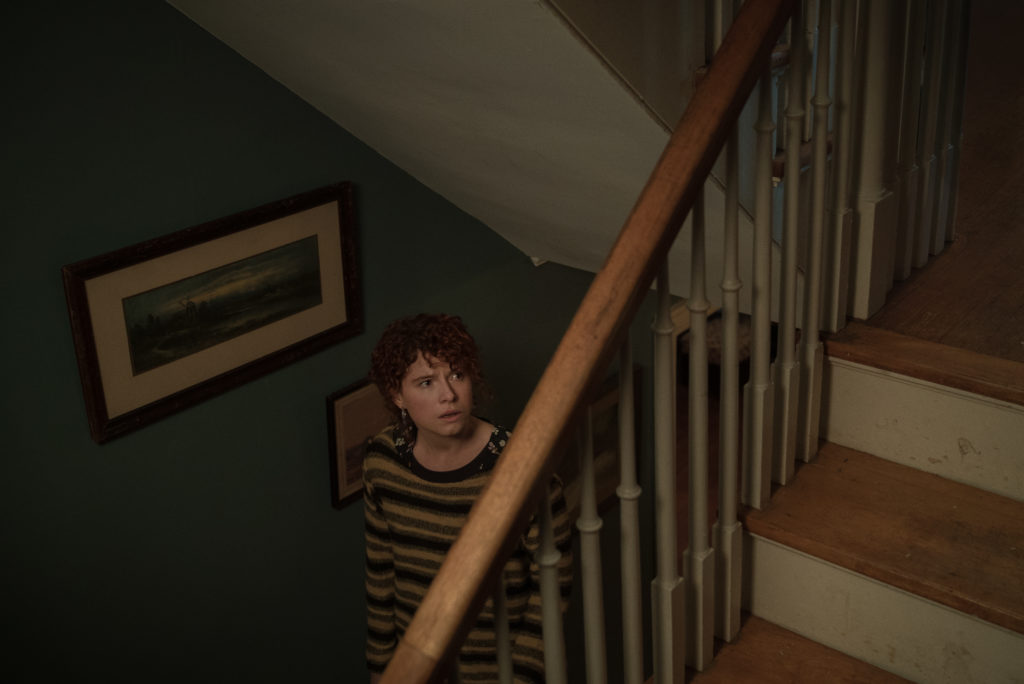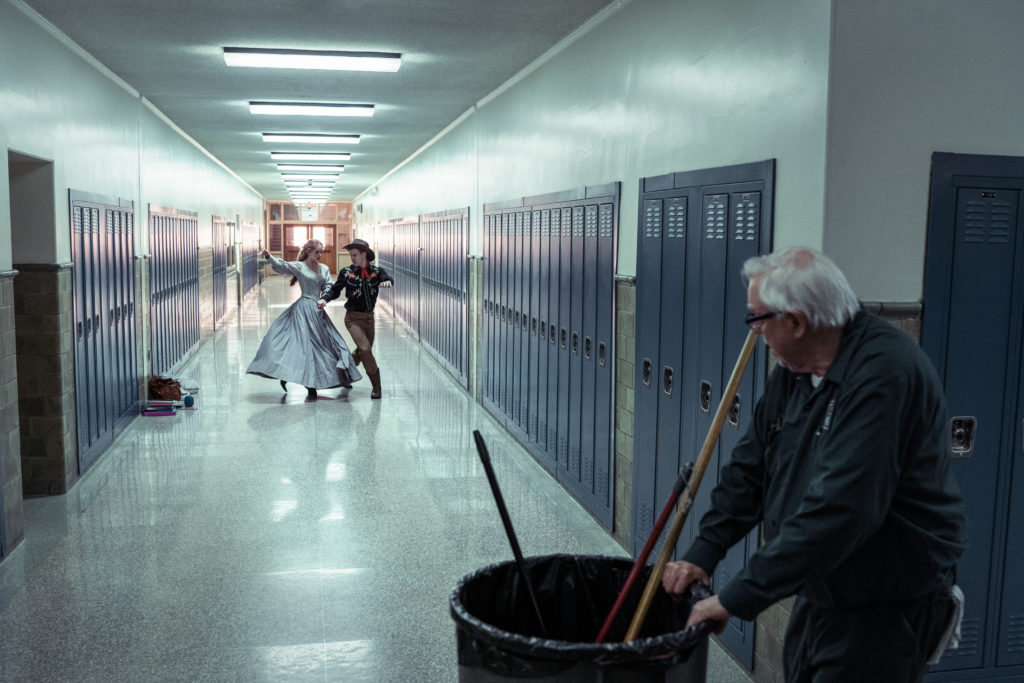
Film Review: I’m Thinking of Ending Things
Written for the screen and directed by Charlie Kaufman. US, 2020, 134 minutes.
Available on Netflix.
One of the many texts cited in I’m Thinking of Ending Things, Charlie Kaufman’s film adaptation of the 2016 novel by Iain Reid, is the David Foster Wallace collection A Supposedly Fun Thing I’ll Never Do Again: Essays and Arguments (1997), which contains within it a report from the set of Lost Highway (1997) titled “David Lynch Keeps His Head.” In that piece, Wallace quotes the critic Pauline Kael, who’s present in the Kaufman film too; I’m Thinking of Ending Things lifts her review of A Woman Under the Influence (1976), while Wallace reproduces lines from her piece on Blue Velvet (1986), where she wrote, “If you feel that there’s very little art between you and the filmmaker’s psyche, it may be because there’s less than the usual amount of inhibition.” Kaufman’s films, inhibited at every turn, place a great deal of art between you and his psyche. And in the case of I’m Thinking of Ending Things, it’s often the work of other artists taking up that space.
Unlike the deadpan of Kaufman’s prior directorial work—Synecdoche, New York (2008), a genuinely disturbing absurdist drama, and Anomalisa (2015), a very funny but almost parodically-simple comedy—I’m Thinking of Ending Things is predicated on rather pointless obfuscations. And I say pointless because that’s how Kaufman treats them: The narrative secrets ostensibly being hidden from the audience—the source novel was lauded in part for its twist ending—are revealed pretty clearly within the first 20 minutes. So I’m going to describe what goes on, pretty clearly, and we’ll go from there.
A woman (Jesse Buckley), first seen cavorting in a hollowed-out town beset by horizontal snowfall, is picked up by her boyfriend Jake (Jesse Plemons), while intercut shots depict an older man getting ready in a room somewhere (the fourth note I took was, is that Jake watching himself?). Across the 20-minute road-trip scene that follows—during which Kaufman indulges in jittery cuts separating fairly straightforward angles looking at the car, the first two characters (both apart and together), and out the window—we find they’re going to visit Jake’s parents. And meanwhile we realize, through synchronicities and crossovers in the film’s edits and soundtrack, that Jake and the Buckley woman’s journey is occurring within the mental landscape of that older character, a janitor working at a typical American-movie-high-school who’s presumably conjuring these protagonists up from some combination of his memories and his fantasies.

The centerpiece follows; a stop to see Jake’s parents (Toni Collette and David Thewlis) that begins with a grotesquely absurd dinner scene and then progresses into a time-warp mind-trip where Buckley’s character observes her would-be in-laws age towards death in nonlinear fragments (that these successive sequences are deeply indebted to two canonical works of American movie-surrealism released during Kaufman’s youth, Kubrick’s 2001 and Lynch’s Eraserhead, has been duly noted by many critics before me.) Then it’s the road again, the pair exchanging more dialogue while driving along dark paths, stopping only at a classically-American roadside storefront while en route to a destination that eventually reveals itself to be nothing less than a parallel reality. That may sound familiar: and indeed the cinematographic design of these car sequences, which make up a huge portion of the film, are emphatically indebted to the 18th hour of Lynch’s Twin Peaks (2017)—a work that I’m Thinking of Ending Things rips off to a borderline unconscionable degree, and one of the very few it doesn’t bother citing.
But of course the film has a that’s the point! vibe which prevents you from holding such charges of derivation against it. In fact the basest subtext of I’m Thinking of Ending Things, revealed plainly by the last scenes, very specifically concerns how the art we experience impacts our personal histories (speaking with Indiewire, Kaufman even said that “the meat of what the movie I made is… [about] dealing with somebody’s experience of absorbing things that they see and how they become part of his psyche.”) Yet on the other hand the central drama of the film, far more pertinent to one’s experience of actually watching it, is less that and more about the Buckley character’s creeping realization that she exists inside somebody else—and not just in a traditionally metatextual Kaufmanesque sort of way, as suggested by that aforementioned quote, but more literally too: The character is always trying to leave the scenes that she’s in, a touch from Buñuel so direct that it’s not so much even citation as quotation.
Kaufman’s movie thus asks you to ask yourself whether she’s a figment of someone’s imagination, or a memory of a real person, or a combination of the same; and then asks you to wonder if that would allow her any free will; and then following all those ideas—which are really about writing fiction more than about the characters themselves or anything else—it asks you to care when, say, the Buckley character is suddenly left alone in a creepy room by the whims of her daydreaming creator. Except by then the film has become so caught up in these heady ideas that its more immediate reality has lost hold, and so images meant to represent tactile mortal terror—or in the case of one hackneyed embrace, images meant to draw a tear—just leave you rolling your eyes, dutifully waiting for Kaufman to pull his next oneiric trick. Those scenes don’t play because the film itself is so overtly intellectualized, and at the same time so easily interpreted, that it never achieves the direct, intense, and linear power of genuinely surrealist film-art like—you know it—Lynch’s: Kael described Blue Velvet as “hallucinatory clinical realism”, and I’m Thinking of Ending Things loses the “clinical”, which is where the humanity of it all truly resides. [★★★]

